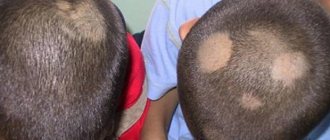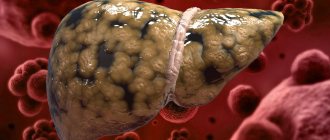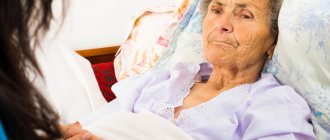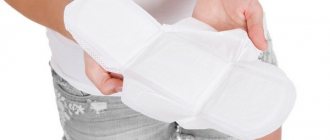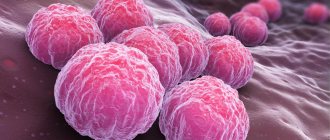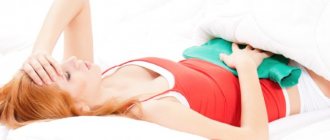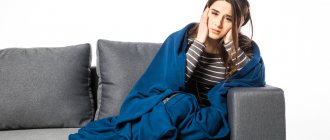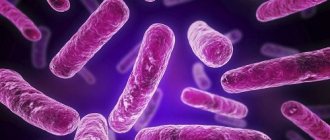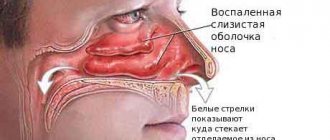Causes
The pathogenesis of osteoarthritis is based on metabolic disorders in cartilage tissues. This means that decay processes begin to prevail over synthesis processes. At the same time, the production of a number of mediators and enzymes is disrupted, which provokes the development of a natural inflammatory reaction.
What is the etiology of osteoarthritis? It all depends on the type of disease. Primary osteoarthritis usually develops under the influence of:
- various static overloads that cartilage tissue is not able to cope with (the load increases due to excess weight, heavy physical labor, high sports loads);
- pathological processes of change in cartilage tissues;
- frequent trauma to the joint area;
- various blood supply disorders in the joint area;
- metabolic diseases such as gout;
- intra-articular type fractures;
- chronic pathologies of the nervous and endocrine systems (primarily diabetes mellitus and thyrotoxicosis).
The classification additionally distinguishes the secondary type of the disease. The causes of this type of osteoarthritis are usually:
- various disorders in the development of joints (neuropathy, joint instability, etc.);
- chronic diseases of the hematopoietic system or diseases that have not been treated for a long time;
- some decompensated pathologies of the endocrine system;
- disorders of metabolic processes in the body;
- the entry of infectious agents into the area of the joint cavity;
- deformation or destruction of the bone skeleton of cartilage tissue.
Old age is considered critical for the development of osteoarthritis, since it is during this period that many decompensated pathologies and disturbances in metabolic processes appear in people.
Causes of development of osteoarthritis of the knee joint
The following factors are of greatest importance in the formation of the disease:
- heredity;
- metabolic disorders;
- autoimmune diseases;
- increased load on the joint (sports, heavy physical work);
- injuries (including intra-articular fractures);
- diseases of the nervous system.
With age, the risk of developing osteoarthritis increases significantly. In most cases, this disease affects people over 40 years of age. In recent years, there has been a trend towards rejuvenation of the disease.
Symptoms
Today, medical classification allows us to distinguish 3 stages of the development of osteoarthritis, dividing it based on the symptoms of the disease:
- Osteoarthritis stage 1. Symptoms are very scarce, diagnosis can be difficult, and patients rarely see a doctor during this period. Primary changes begin to occur in the cartilage and synovial fluid. When visiting a doctor, the patient may complain of pain that appears after previously habitual physical activity, as well as a slight limitation of mobility.
- Osteoarthritis grade 2. Unlike stage 1, at stage 2 the first visual signs of pathological changes appear. The pain syndrome is characterized by patients as intense, significantly increasing after any physical activity. The range of possible movements decreases markedly, the person complains to the doctor about an audible crunching sound and severe stiffness. This degree of osteoarthritis is characterized by a complaint of muscle fatigue, which is especially felt after performing static loads (for example, standing on the legs with diseases of the lower extremities). If, in addition to the disease itself, synovitis develops, then complaints of swelling in the affected area, redness, and increased local temperature are possible. Also, when the fingers are affected, this stage of osteoarthritis is characterized by the formation of palpable formations, which are called Heberden’s nodes.
- Osteoarthritis grade 3. Grade 3 osteoarthritis is characterized by complaints about the involvement of nearby muscle structures in the pathological process. Since the joint is no longer capable of full movement, the muscles nearby begin to shorten or, on the contrary, stretch. Contractures are formed, which, when trying to restore mobility, become deformed, loosening the damaged joint. This degree of osteoarthritis, unlike the first and second, is characterized by a very pronounced pain syndrome. In this case, the situation becomes much worse if the patient is diagnosed with damage to several joints. If treatment for osteoarthritis of the affected joints of the third degree is not started on time, a person may end up not just in a hospital bed, but in a wheelchair.
Osteoarthritis of the knee joint grade 3
Osteoarthritis of the knee joint is a very common disease characterized by destructive processes in the joint. The mentioned systemic disease brings a lot of inconvenience in the form of pain, stiffness in movements, swelling of the knee joint.
Like other diseases, gonarthrosis (a similar name is often used) is considered a common disease among similar diseases; 15-30% of the population suffer from osteoarthritis of the knee joint. Despite advances in medicine, the number of people suffering from gonarthrosis is not decreasing, on the contrary, it is increasing. Delayed treatment complicates the situation.
A stubborn fact is considered an unfavorable trend: treatment is often complicated by late seeking medical help. Not surprisingly, in the initial stages, when a small lesion occurs directly in the joint, people often attribute minor pain and stiffness in movements in the morning to simple fatigue. When the pain becomes obvious, movements bring significant inconvenience, treatment without surgery is impossible, and the joint is destroyed.
Kinds
Today there are different options for classifying osteoarthritis by type. First of all, it is determined whether the pathology has affected large joints or small ones. This factor is influenced mainly by the patient’s age and the load on certain joints.
According to the type of localization, there is the following classification:
- localized pathology, in which signs of osteoarthritis are observed in only one joint;
- generalized pathology in which two or more joints are affected.
In medical practice we mainly encounter:
- coxarthrosis, affecting one of the largest joints in our body - the hip;
- gonarthrosis, affecting the knee joint, which bears the highest loads throughout human life;
- damage to the phalangeal joints in the fingers, which are also subject to severe stress throughout life.
Folk remedies
Treatment at home can also be carried out using folk remedies if they are permitted by the attending physician. In addition, this method of therapy cannot be considered the only effective one. The following recipes will be useful:
- Dandelion decoction. Fresh raw materials in the amount of 1 tbsp. pour 0.5 liters of boiling water, after which it should be brought to a boil and allowed to brew (10 minutes). You need to drink half a glass half an hour before meals, 2 times a day.
- Celandine oil. To prepare it, you should chop the stems and leaf blades of celandine (several tablespoons), pour it all with vegetable oil and let it brew for a couple of weeks. It is recommended to rub the resulting drug into the knee joint affected by osteoarthritis 2 times a day.
- Horseradish based compress. The vegetable is pre-chopped and filled with liquid. Next, it should be boiled for several minutes. After cooling the broth a little, soak a cloth in it and apply it to the affected area. Keep the compress for no more than 15 minutes.
- Mustard ointment. It improves blood circulation in the knee joint. Salt and mustard are mixed in equal quantities. After this, you need to melt the paraffin and add it to the resulting product until it takes the form of a cream. After hardening, the ointment is applied to the knee joint affected by osteoarthritis before bedtime.
- Copper. The use of copper also gives very good results in the fight against the manifestations of osteoarthritis. In order to alleviate the patient’s condition, it is enough to simply apply a copper plate to the affected knee joint and leave it for 15 to 20 minutes.
Before using any traditional medicine recipes, it is strongly recommended to consult your doctor.
Disease progression
Doctors judge the degree of development of the disease not only by symptoms, but also by the severity of manifestations of osteoarthritis on X-ray images.
Based on this diagnostic method, 5 stages of the disease are distinguished:
- Initially, there are no radiographic changes. The articular cleft is clearly visible, its line is not changed. It is possible to detect small areas of destruction of cartilage tissue.
- Radiological signs of the lesion are still either completely absent or minimally expressed. The joint space is narrowed to approximately ½ of its original width. There are signs of sclerosing changes in bone tissue. Osteophytes may be detected.
- The x-ray shows signs of a moderate change in the condition of the joint. The narrowing of the joint space is more pronounced, as are signs of bone tissue sclerosis. Not only small, but also quite large osteophytes are found.
- The changes are characterized as pronounced. A sharp narrowing of the joint space to 1 mm or less, the presence of severe osteosclerosis and only large osteophytes.
- There is an active increase in the signs that appeared at the fourth stage. Deforming osteoarthritis (DOA) develops. The joint space may be completely absent, and changes in the configuration of the joint begin to occur.
What is osteoarthritis?
Treatment of osteoarthritis should begin in a timely manner, when the first pain occurs
Osteoarthritis is a common disease characterized by joint damage and breakdown of cartilage tissue. Unfortunately, every year the disease not only becomes more widespread, but also “rejuvenates”. The disease is increasingly occurring in young people. Now joint pathologies are the third most common in the world and most often occur in women. As a rule, the disease develops gradually and in the first stages may be invisible or appear during sports or excessive stress, and is detected at a time when serious processes deforming the joints are already underway, so treatment for osteoarthritis may not always begin on time.
Diagnostics
Before starting treatment for osteoarthritis, the patient will have to undergo a series of diagnostic tests to confirm the diagnosis.
The doctor first of all evaluates the patient’s complaints, examines the affected joint visually, and clarifies whether there are risk factors for osteoarthritis. Pain syndrome plays an important role, questions about the features of which can go on for a long time.
To confirm the diagnosis, a specialist can use:
- radiography, which is considered the main method of examination for this disease (usually at least two images are taken in different projections);
- MRI or CT, and sometimes both studies at once;
- Ultrasound of the affected joint;
- A series of clinical tests to clarify the general condition of the patient (urinalysis, blood analysis, biochemistry, etc.).
If there is doubt about the diagnosis, diagnostic arthroscopy may be performed. In this case, in parallel with the diagnosis, some treatment may be carried out at the discretion of the doctor.
Osteoarthritis: general information about the disease
According to statistics, osteoarthritis deformans is diagnosed in approximately every fifth person. In Russia, as a rule, this disease develops in people after 40 years of age. At the same time, osteoarthritis in its frequency accounts for about 70% of all systemic articular lesions. Through X-ray examination, the disease is detected in approximately 50% of people aged about 55 years, and in 80% of patients after 75 years of age. In Russia, the number of cases is growing every year. At the same time, osteoarthritis of the knee joint ranks fourth among the main causes of disability in women, as well as eighth in disability in men.
Most often, the degenerative-dystrophic process affects large joints, in particular the hip and knee. But in addition, the small joints of the foot and hands are also susceptible to osteoarthritis.
Osteoarthritis in women
Women are more susceptible to developing osteoarthritis than men. According to statistics, approximately 30% of women aged 65-75 years have pronounced signs of osteoarthritis of the knee joints. In addition, representatives of the weaker sex are more susceptible to the development of degenerative changes in the joints of the base of the thumb and interphalangeal joints. Osteoarthritis of the hands occurs in approximately 50% of women with degenerative joint disease.
Women are more susceptible to developing osteoarthritis due to the characteristics of their body. The so-called estrogen receptors contained in the cells of cartilage tissue respond to a decrease in the level of female sex hormone and significantly increase the risk of developing the disease. It is estrogen that is responsible for the integrity of cartilage tissue. If the level of female sex hormone is insufficient, cartilage tissue undergoes degenerative-dystrophic processes. Most often this occurs during menopause, when women at risk of developing osteoarthritis may be prescribed hormone replacement therapy. Experts note that in women who take medications with hormones during menopause, the risk of developing osteoarthritis of the hip and knee joints is reduced significantly.
A study was also conducted in which 508 male and female respondents took part. Based on its results, it was possible to find out that representatives of the fairer sex with osteoarthritis of the knee joint experience more pronounced pain when moving, while at rest the severity of pain in both sexes is the same. This is explained by the fact that the muscles of men are usually stronger than those of women.
Osteoarthritis in men
The thickness of cartilage tissue and the volume of bones in men is greater than in women. That is why representatives of the stronger sex are less susceptible to developing osteoarthritis. But there are a number of factors that increase the risk of joint damage in men. For example, men, unlike women, are more likely to be exposed to excessive physical activity, they are more likely to smoke and drink alcohol, and they are also more likely to be overweight. Men are more likely to suffer from osteoarthritis, which affects the joints of the lower body (feet and toes, knees and hips).
Treatment
Various techniques are used today to treat osteoarthritis. In most cases, standards of care require the doctor to first try conservative methods and, if they are ineffective, refer the person for surgery.
How to treat osteoarthritis? First of all, medications are selected that can help in this difficult matter. The following groups of drugs are used:
- non-steroidal anti-inflammatory drugs;
- chondroprotectors;
- glucocorticosteroids.
Medicines help reduce the severity of negative symptoms and alleviate the patient’s general condition during exacerbations. Outside of exacerbations, additional techniques are used that will reduce the likelihood of a relapse.
Massage
For osteoarthritis, the massage technique is actively used when the acute period has already been stopped. Not only exposure with hands is allowed, but also the use of specialized devices.
It is important to remember that the diseased joint itself should not be exposed; all manipulations should be aimed at the tissue around it.
Can be used:
- strokes of varying intensity with an open palm in a circle;
- rubbing in a circle, carried out alternately with the fingers, then with the help of an open palm;
- warming up the muscles around the affected joint, performed alternately with the fingertips and an open palm.
After the main effect, it is recommended to perform several soothing strokes to allow the heated muscles to cool down a little. If osteoarthritis has developed, the symptoms of which cannot be controlled with medication, the use of massage techniques is prohibited until consulting a doctor.
Physical exercise
Arthrosis can be prevented with the help of exercise therapy - a special set of exercises that have a therapeutic effect, improving the general condition of the patient.
The basic features of exercise therapy are:
- doctor’s assessment of individual characteristics, such as gender, age, presence of chronic diseases, etc.;
- regularity and consistency of classes;
- long-term restoration of lost functions is possible only with regular and systematic exercise;
- slow but steady increase in loads;
- cyclicality, in which load is replaced by rest.
When choosing a set of exercises, the doctor must take into account indications and contraindications, and therefore for the first time it is recommended to carry out the exercise under the supervision of a specialist.
The level of physical activity after an exacerbation of the pathology must be increased gradually, without haste. For each affected joint, its own set of exercises is selected.
Surgical intervention
How to treat osteoarthritis if none of the conservative methods has proven effective and the disease continues to actively progress? In this case, surgery will come to the aid of a person.
There are several ways that can help the patient:
- Arthroscopic type joint debris. An operation that cannot cure the disease, but can significantly alleviate the patient’s general condition. During the manipulation, an arthroscope is inserted into the joint cavity, after which it is used to remove fragments of cartilage and other inclusions that interfere with normal movement. The effectiveness of the intervention is most pronounced in the initial stages of the disease. As the patient notes, not only joint pain, but also stiffness, subsides. Stopgap measure. In a few years, you will either have to carry out the intervention again, or choose a different method of treatment.
- Periarticular osteotomy. A more complex intervention carried out in several stages. During this procedure, the bone structures located in the immediate vicinity of the affected joint are sawed and installed at slightly different angles. Thanks to this, it is possible to redistribute the load on the affected area and slow down pathological processes. The effectiveness of the intervention is felt for at least 5 years.
With the development of osteoarthritis of large joints, endoprosthetics is recommended.
Traditional methods
Traditional methods in the treatment of osteoarthritis are not considered very effective. They may help combat the symptoms of the disease, but will not eliminate the cause. After consultation with a doctor, it is allowed to use various compresses and rubbing, if the patient is not allergic to the components of traditional recipes, and also if he does not stop traditional therapy.
You can rub using a decoction of flax seeds, beef fat, or ficus tincture. Another option is to steam your feet for 30 minutes in a decoction of cinquefoil fern leaves.
Compresses made from flour and ammonia or a mixture of honey and salt can help relieve pain. They are applied to the affected area overnight, secured with a warm bandage. Read more about folk remedies for treating joints →
Ostearthritis: the importance of exercise
Rest helps your joints, but exercise works better in the long run. You should choose exercises and workouts that have less impact on your joints. However, people with mild OA can exercise on their own. But for patients with more severe forms of OA and other medical problems, it is better to see a physical therapist or qualified personal trainer.
- Simple movement exercises are especially helpful in the morning and after prolonged periods of inactivity. Find out more Exercise for arthritis: do's and don'ts
- Specific stretching and strengthening exercises are helpful for certain types of OA (strengthening the quadriceps muscles reduces knee OA pain). A physical therapist can help identify aching joints. Learn More: Exercises to Strengthen Your Knees
- Swimming and other water exercises provide cardiovascular training and body flexibility.
- Walking, cycling, elliptical and rowing machines Learn more: 10,000 steps a day for health or less
- Stretching and yoga improve flexibility Read more: Is it safe to do yoga for back pain?
- Resistance exercises maintain muscle strength. Learn more: Exercises and fitness for the back
Osteoarthritis: treatment with tablets
After decades of doubt and even disagreement, doctors accept that acetaminophen (Tylenol and other brands) can often reduce OA pain.
In 1995, the American College of Rheumatology recommended acetaminophen as a primary drug of choice . Start with 650 mg three times daily, increasing to a maximum of 1000 mg four times daily. This medicine is available without a prescription, but people with liver disease should consult their doctor. Those who regularly take acetaminophen should eat well and reduce their alcohol intake as much as possible.
If acetaminophen does not relieve pain, the next step is usually anti-inflammatory treatment. Two groups are available: traditional non-steroidal anti-inflammatory drugs (NSAIDs) and the more controversial selective COX-2 inhibitors (coxibs) .
Find out more: Medicines for back pain: which ones to choose
Some medications in each group are listed below:
- NSAIDs (target COX-1 and COX-2)
- Aspirin
- Diclofenac (Voltaren)
- Di unisal (Dolobid)
- Fenoprofen (Nalfon)
- Flurbiprofen
- Ibuprofen (Advil, Motrin and others)
- Indomethacin (Indocin)
- Ketoprofen
- Ketorolac (Toradol)
- Meclofenamate (Meclofen)
- Mefenamic acid
- Nabumetone (Relafen)
- Naproxen
- Oxaprozin (Dypro)
- Piroxicam (Felden)
- Sulindac (Clinoril)
- Tolmetin
2. Relatively selective (Target COX-2 more than COX-1)
- Etodolac (Lodin)
- Meloxicam (Mobic)
- Coxibs
3. Highly selective (COX-2)
- Celecoxib (Celebrex)
Possible side effects and health risks of NSAIDs and inhibitors
Start with NSAIDs. Choose the cheapest drug that suits you. Use the lowest dose that gives relief. Try reducing the dose or switching to acetaminophen when you feel better.
First of all, be aware of side effects. Stomach irritation and intestinal bleeding are the most common problems. Particularly vulnerable patients may want to ask their doctor about adding a proton pump inhibitor (such as omeprazole) or misoprostol (Cytotec) to reduce the risk of bleeding.
Patients with high blood pressure or kidney disease, as well as the elderly, require medical supervision and monitoring. And in April 2005, as a result of problems with coxibs, the FDA required all NSAIDs except aspirin to carry warnings about the risk of cardiovascular disease on their labels. Patients taking warfarin (Coumadin) or other anticoagulants require special precautions and monitoring if they wish to use these drugs.
Cardiovascular risks, including heart attacks and strokes, have led to the disappearance of two popular coxibs, rofecoxib (Vioxx) and valdecoxib (Bextra). The oldest coxib, celecoxib (Celebrex), is still available by prescription. However, there are concerns about cardiovascular side effects. Doctors should use it only when other treatments have failed, prescribe the lowest effective dose, monitor patients regularly, and generally avoid the drug in patients with cardiovascular disease.
Find out more: Painkillers for chronic pain: benefits and harms
Osteoarthritis: treatment with injections
Corticosteroids are strong anti-inflammatory drugs. But they have significant side effects when taken in high doses for several weeks or longer. Oral steroids may be needed for advanced rheumatoid arthritis, but should not be used for OA. However, a long-acting steroid can be injected directly into the inflamed joint, often in combination with local anesthesia. Clinical trials show a significant reduction in pain, especially during painful attacks of knee OA, but the effect wears off within weeks or months. However, if a steroid injection helps, it can be repeated up to three or four times throughout the year. Find out more: Arthritis Knee Pain: Treatment Methods
Hyaluronic acid is a natural component of cartilage and joint capsule, providing lubrication and elasticity. The FDA has approved hyaluronic acid injections (Hyalgan, Synvisc) for knee OA. The drug is administered once a week for three to five weeks. Unfortunately, the pain returns after a few weeks or months.
Osteoarthritis: Are Chondroitin and Glucosamine Supplements Effective?
Until 1997, supplements were little-known drugs used in veterinary medicine. Then glucosamine and chondroitin sulfate appeared. Doctors were skeptical of yet another unregulated dietary supplement with extravagant medical claims. But this skepticism did not stop them from researching the products. In fact, glucosamine and chondroitin are among the few supplements that have been extensively studied. Research does suggest that although they do not provide a cure, they may reduce OA pain, at least in some patients.
Glucosamine and chondroitin are present in normal cartilage. Most glucosamine supplements are made from oyster and crab shells; Chondroitin is usually obtained from cow or shark cartilage. Supplements are sold separately or in combination. Manufacturers typically recommend 1,500 mg of glucosamine and/or 1,200 mg of chondroitin per day, usually divided into three doses.
Research on these supplements varies widely in their scientific significance. Some show little benefit, others moderate pain relief. However, two independent meta-analyses concluded that both products may reduce OA pain. And two studies on glucosamine are even more encouraging. Both a 2001 study of 212 patients in Belgium and a 2002 study of 202 patients in the Czech Republic found that three years of therapy slowed the progression of OA in the knee, reducing pain by 20-25%. Both trials were criticized on technical grounds, and the National Institutes of Health began a US study of glucosamine in 1,600 OA patients.
There are some things to keep in mind when taking supplements:
- People with shellfish allergies may be allergic to glucosamine.
- Diabetics should be sure that it does not increase blood sugar levels.
- Patients taking chondroitin and anticoagulants should ensure that the product does not have an excessive anticoagulant effect.
- Anyone using these products should remember that this is not a drug. Therefore, their actual contents, effectiveness and safety cannot be guaranteed.
Despite these uncertainties, glucosamine and chondroitin are worth trying together or separately in the treatment of OA that responds poorly to standard therapy. Treatment should be carried out for at least two or three months.
Many other supplements have been recommended as treatments for OA. These include S-adenosyl-L-methionine (SAMe), ginger, dimethyl sulfoxide (DMSO), and cetyl myristoleate. However, it is also difficult to assess the safety and effectiveness of these products.
Complications
Many people faced with the disease are concerned about the question of what are the complications of osteoarthritis? They may be as follows:
- changes in the configuration of the affected joints;
- transition of pathology to osteoarthritis;
- pathological change in the functionality of the affected joint;
- destructive changes in the joint;
- osteoporosis;
- weakness of bone tissue, leading to frequent fractures.
It is important to remember that if a patient with a disease does not consult a doctor in a timely manner, he risks ending up in a wheelchair over time.
Osteoarthritis is a disease that in its final stages leads to irreversible changes, completely depriving a person of the ability to normally use the affected joint.
How to treat osteoarthritis of the knee joint in the 1st and 2nd stages of the disease?
Osteoarthritis is a degenerative disease of the joint, leading to its destruction and loss of function. Osteoarthritis of the knee joint, grade 2, is one of the most common reasons for visiting a doctor among middle-aged and elderly people. Why does this disease develop and how to cope with it? Is it possible to treat osteoarthritis with folk remedies?
Prevention
Is it possible to prevent the development of the disease? There is no way to 100% insure yourself against osteoarthritis, but there are measures that can significantly reduce the likelihood of developing the disease. These include:
- regular performance of a minimum set of physical exercises to strengthen the musculoskeletal system;
- weight control, which consists in preventing the gain of extra pounds;
- refusal to constantly remain in a static position, if possible;
- careful monitoring of the intensity of physical activity, refusal to lift weights and other heavy physical labor;
- careful selection of shoes with the most comfortable soles and heels, which should be no more than 3 cm;
- wearing various means of fixation and additional support in cases where the need arises, confirmed by a doctor.
Osteoarthritis is a dangerous disease that develops very slowly. The pathological process for some people can take decades, and by the time they see a doctor, it will be too late.
There are no similar articles.
Nutrition
It is necessary to consume the following products more often:
- low-fat fish and meat;
- dairy products;
- fruits and vegetables;
- greenery;
- almonds, pine nuts;
- jellies and jelly.
The following foods should be limited in your diet:
- fatty meat (pork, lamb);
- citrus and sour fruits, juices from them;
- spices;
- whole milk;
- some vegetables (red peppers, white cabbage, tomatoes).
Animal fats (beef and pork fat, butter) should mostly be replaced with vegetable oils. For example, olive, sunflower, mustard. If possible, food should be varied as much as possible.
Regime and diet
All patients with arthrosis of the joints, especially with its exacerbation, are advised to follow a special regimen. Its essence lies in unloading diseased joints. Prolonged standing and walking are prohibited; if the joints of the hands are affected, prolonged stereotypical movements are prohibited. The person is prescribed bed rest. It is necessary to temporarily suspend physical activity and perform physical therapy exercises. In especially severe cases, traction is used to unload the joints, and the use of special orthopedic devices, such as a walking cane, splints and orthoses, is also prescribed.
No special diet is required for osteoarthritis of the joints. It is necessary to enrich your diet with foods high in vitamins and microelements. If you are overweight, your diet should be low in calories in order to normalize your body mass index, since every extra kilogram increases the load on sore joints.
Pathogenesis
The disease is a consequence of an imbalance between the formation of new building material and its destruction. Soft, elastic cartilage loses its properties, turning into a thin, dry, rough object.
The periarticular bone structures begin to grow, which aggravates the process, immobilizing the joint and leading to its deformation. Cells of a nonfunctional joint capsule are replaced by connective tissue cells, which leads to fibrosis and aseptic inflammation.
The joint cavity is filled with inflammatory exudate, stretching its capsule and ligaments. Increased pressure and reduced elasticity of the cartilage lead to pain, stiffness, and the acquisition of a specific gentle position of the joint.
Ultimately, the process leads to stiffness of the joint and the formation of contractures. The affected joint is completely disabled, its motor activity is lost, and it becomes non-functional.
Classification by anatomical location
In addition to classification according to the clinical and morphological signs of the disease, there is also a division of osteoarthritis according to which joints are subject to degenerative-dystrophic processes. Since the disease most often affects joints that are subjected to excessive stress, the most common lesions are:
- Supporting joints that bear the main load during movement. First of all, these are the knee and hip joints, as well as the joints of the hands.
- The joint of the big toe, the deformation of which leads to the formation of the so-called “bump”.
- Spinal joints, often developing along with osteochondrosis. This type of osteoarthritis is called spondyloarthrosis.
But no less common are lesions of the joints of the hands, as well as the development of degenerative processes in the ankle and shoulder joints.
Osteoarthritis of the hands
Osteoarthritis of the hands is a disease that in the initial stages has practically no manifestations. The pain may be minor, and patients usually do not notice it at first. Over time, small nodular thickenings of bone tissue may form in the joint area:
- Bouchard's nodes form on the proximal interphalangeal joints and are located on the back of the palm. When palpating such formations, painful sensations are most often not observed. But in some cases, patients may experience minor pain. Without treatment, bone formations called Bouchard's nodes can limit joint movement.
- Heberden's nodes usually occur on the distal interphalangeal joint. Such seals are most often formed on the middle and index fingers. However, sometimes they can occur on the ring or little finger. Heberden's nodes can cause discomfort, but most often they are not the cause of joint pain.
Osteoarthritis of the hands most often develops against the background of natural age-related changes. The thinning of cartilage tissue and the loss of its elasticity makes the joint not resistant to stress. Also, the occurrence of disorders in the joints of the hands can be caused by hormonal changes, characteristics of professional activity and metabolic disorders in the body.
As osteoarthritis of the hands develops, patients experience pain in the affected joints. Damage to the fingers occurs symmetrically. The progressive disease deforms the joints and limits their movement.
Osteoarthritis of the shoulder joint
Frequent excessive stress on the arms, injuries, metabolic disorders and many other factors can lead to the development of a disease such as osteoarthritis of the shoulder joint. People in certain professions are more susceptible to damage to the shoulder joint, for example, builders, factory workers, etc. Also at risk for developing osteoarthritis of the shoulder joint are athletes whose main load during exercise falls on their arms.
Osteoarthritis of the shoulder joint that is not diagnosed in time and left untreated can lead to a significant decrease in the quality of life of patients and partial loss of ability to work.
The first sign of the development of this disease may be pain, which appears after prolonged exercise on the arms and recedes after rest. Over time, the disease manifests itself as a feeling of stiffness in the area of the affected joint and a decrease in the amplitude of its movement. Crepitus also begins to appear.
Osteoarthritis of the knee joint
A disease such as osteoarthritis of the knee joint destroys not only the joint itself, but also the surrounding bone tissue. As the disease progresses, hyaline cartilage loses its elasticity and strength, and its functionality is also limited. After complete destruction of the cartilage tissue, the knee joint loses its mobility, and the knee begins to deform.
The first sign of the development of osteoarthritis of the knee joint is pain in the knee. In the early stages of the disease, patients may experience slight discomfort when bending or extending the knee. Stiffness of movement may also be present after a person remains in one position for a long time or after resting. This stiffness is most evident in the morning after sleep. In addition to stiffness of movement, in such cases crepitus may be observed, expressed by a characteristic crunching sound in the knee.
The progression of the disease results in severe constant pain for patients, which intensifies even with minor physical exertion. Among the factors that increase the risk of developing osteoarthritis of the knee joints, it is worth noting:
- excess weight;
- smoking and abuse of alcohol and other harmful substances;
- leg injuries leading to the development of post-traumatic arthrosis;
- congenital pathologies;
- disturbances in the functioning of the endocrine system;
- hormonal imbalances;
- vascular pathologies.
Osteoarthritis of the hip joint
The destruction of cartilage tissue in the hip joint occurs for various reasons. Most often, the disease develops against the background of age-related changes, when the cartilage tissue in the joints actively loses moisture and is destroyed. Without cartilage, the bones connected by a joint begin to rub against each other when moving. Dents and osteophytes form on the bones, which causes severe pain when moving and ultimately leads to deformation of the joints and bones. Osteoarthritis of the hip joint is one of the most common causes of disability in patients with this diagnosis.
The main risk group for the development of this disease is people over 45 years of age. Moreover, women suffer from osteoarthritis much more often than men. In addition to age, the risk of developing the disease in females is increased by hormonal changes that occur during menopause. Excessive loads on the joint caused by excess weight or occupational characteristics also increase the risk of developing the disease. Risk factors include congenital hip dislocation and hip dysplasia, Peters disease and arthritis.
Osteoarthritis of the ankle joint
A disease such as osteoarthritis of the ankle joint is a degenerative-dystrophic process that affects all structures and tissues of this joint. Risk factors for developing the disease are:
- excessive physical stress on the legs;
- excess weight;
- active sports;
- uneven distribution of loads on the legs when moving;
- getting injured;
- constantly wearing uncomfortable shoes;
- standing work;
- chronic and inflammatory diseases;
- genetic predisposition, etc.
The main symptoms of osteoarthritis are pain in the affected joint (in this case, the ankle), which intensifies with loads on the lower extremities, crepitus (a characteristic crunching sound when moving the joints), muscle atrophy, swelling in the ankle joints, stiffness of movement, especially evident in the morning, when the legs are immobilized for a long time.
Unconventional methods of therapy
Alternative, or non-traditional, methods of treating osteoarthritis are very popular among the population, despite the lack of clinical evidence of their effectiveness. However, such techniques have helped more than one thousand patients.
The most popular methods of non-traditional treatment of joints:
- Treatment with folk remedies. There are many traditional medicine recipes for both internal and external use. When choosing the right product for you, be sure to consult your doctor about this. Perhaps you have contraindications to the use of a particular recipe.
- Apitherapy. This is treatment with bee products and bee venom. Both bee stinging and bee death treatment are used. The main caution is that all apitherapy methods are contraindicated if you are allergic to bees.
- Hirudotherapy. This is a treatment method using medicinal leeches. Animals secrete a substance called hirudin into the bloodstream. It improves microcirculation and rheological properties of blood, eliminates inflammation, swelling and pain, and improves metabolic processes. Hirudotherapy is contraindicated for people with increased bleeding, hemophilia, pregnant women, and those with increased sensitivity to hirudin.
Treatment of osteoarthritis at home
Treatment of osteoarthritis at home is very successful, but a preliminary consultation with a physician, specialized diagnostics, and adherence to all medical prescriptions are required. The patient is registered at the dispensary, periodically visits the doctor, and during the consultation the treatment strategy can be reviewed and changed.
A visit to a specialized institution will also be appropriate in order to carry out specific medical procedures - exercise therapy, massages, physiotherapy. In this case, ultraviolet irradiation, electric currents, alternating magnetic fields, electrophoresis and phonophoresis of drugs on the joints are used. Thermal procedures are indicated, including applications of paraffin, ozokerite, silt and peat mud.
In the absence of exacerbation (synovitis), sanatorium-resort treatment is indicated - Khmilnik, Cherche, Saki, Evpatoria, Kuyalnik, Velikiy Lyuben.
Differences between arthrosis and ostearthrosis
The main differences between osteoarthritis and arthrosis include:
- The essence of the disease. Arthrosis is the general name for a disease of any joint in the human body. Osteoarthritis is the name for a certain severe stage of arthrosis that occurs in the knee joint.
- The causes of these diseases. Most often, arthrosis occurs in females and is passed on to heirs along the genetic line. Osteoarthritis occurs when the joints are mechanically overloaded.
- Diagnostics. When nodules first appear in a joint, the doctor diagnoses osteoarthritis. Osteoarthritis is a disease of the joints of the fingers of the extremities (most often the thumb), while arthrosis can be a disease of any joint in the body (usually the knee).
For successful treatment of arthrosis, a person at the first signs of the disease must seek advice from a specialist with a higher medical education. Self-medication leads to neglect of the disease and unpleasant consequences. The doctor will prescribe a comprehensive treatment regimen. Arthrosis should not start from a very young age. Take care of your joints and old age will not be a burden!
Physiotherapy
Therapeutic gymnastics is aimed at achieving the following goals:
- eliminate muscle spasms;
- prevent muscle atrophy;
- improve nutrition of joint structures and oxygen saturation of tissues;
- increase mobility in the joint.
The type of exercise performed depends on which joints are affected by osteoarthritis.
ATTENTION! Exercises in the physical therapy complex are developed by a doctor in accordance with the characteristics of the disease.
Postisomeric relaxation
Post-isomeric relaxation is not a passive rest of the patient, but an active joint work between him and a specialist. The patient is required to periodically tense and relax certain muscle groups. At the moment when the muscles are relaxed, the specialist stretches them.
Postisomeric relaxation is considered an effective and safe treatment for osteoarthritis. It is used to prevent and eliminate muscle spasms, as well as as a preparatory step for traction or manual manipulation. The technique has proven itself in the treatment of large joints at the initial stages of the disease.
Physiotherapeutic procedures
Physiotherapy is not the main way to get rid of joint diseases, but effectively complements medication courses and exercise therapy. The use of modern equipment in treatment can reduce the severity of pain, swelling and inflammation. Microwaves, which are created by electrical devices, improve the circulation of fluids in the joints, stabilize the condition of tissue cells and return them to their natural form.
Today, the following types of physiotherapy are used to treat osteoarthritis:
- magnetic therapy;
- phonophoresis;
- medicinal electrophoresis;
- paraffin and ozokerite applications;
- ultra-high frequency currents (UHF);
- laser treatment;
- amplipulse therapy;
- therapeutic mud wraps;
- baths with sea salt or medicinal plants.
General strengthening and therapeutic massage is done only during periods of no exacerbation of arthrosis. A long massage using warming oils improves the tone of the muscles that support damaged joints, improves blood flow in them, and eliminates pathological muscle spasms. The video shows the best remedy for joint pain:
